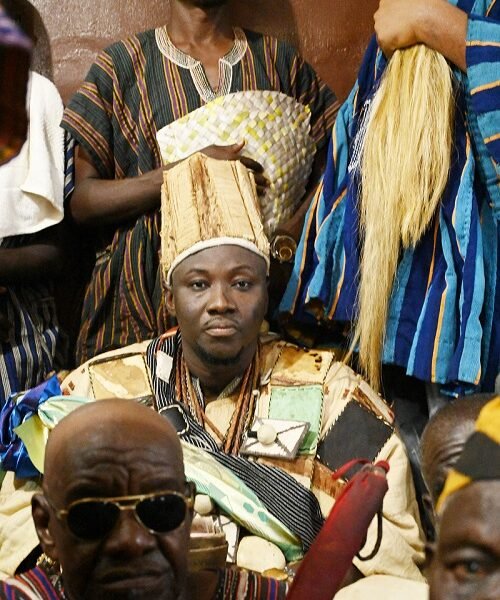News
Dagbon bows in majesty to bid farewell to Late Mion Lana

Sambu, the ancestral heartland of the Mion Traditional Area, has become a river of royal memory and cultural splendor as Dagbon bids farewell to one of its most revered sons, the late Mion Lana, Nyab Abdulai Mahamudu, in a grand spectacle of tradition, reverence, and unity.
For a week now, the town has pulsed with a sacred rhythm resounding with ancestral drumming, soul-stirring dirges, ceremonial dances, and the thunderous salute of muskets.
The air is thick with incense and history, as Dagbon’s ancient customs unfurl in a symphony of grief and grandeur.
At the centre of it all stands the enduring spirit of the Mion Lana “The Peacemaker of Dagbon” whose final funeral rite, culminated in a historic durbar, drawing chiefs, royals, politicians, and mourners.
All have gathered in Sambu not merely to mourn, but to celebrate a life that bridged tradition and transformation.
Nyab Abdulai Mahamudu was enskinned as Bolin-Lana at the tender age of 14, following the death of his father, the late Ya-Na Mahamadu IV.
For over three decades, he waited in the wings of tradition, observing sacred protocols and enduring royal seclusion until March 3, 2019, when he was enskinned as Mion Lana, one of the most powerful positions within the Dagbon Kingdom and a direct heir to the revered Ya-Na throne. Yet his reign, though brief, was profoundly impactful.
With a voice firm in wisdom and a heart anchored in peace, the Mion Lana became a cornerstone in healing the fractured legacy of Dagbon’s past.
In 2019, his public endorsement of Ya-Na Abukari II symbolised the dawn of a new era—one of reconciliation, renewal, and shared destiny.
He was more than a royal figure; he was a visionary. Under his leadership, the Mion Traditional Area witnessed a surge in youth engagement, education reform, and community development.
His “Back to School” campaigns reignited hope for thousands of young people. Through partnerships with organisations like the Ghana National Petroleum Corporation (GNPC), he oversaw the construction of new classroom blocks and championed the drilling of over 15 mechanised boreholes, bringing clean water to remote communities.
In every action, the Mion Lana embodied a rare fusion of tradition and progress of ancient authority and modern compassion.
The final rites spearheaded by the elders of the Abudu Royal Gate and the Mion Traditional Council are as much a cultural renewal as they are a farewell.
From Geoffrey Buta, Sambu